Photographs: Athar Hussain/Reuters Amir Mir
The root cause of the law and order problem in Karachi is that both MQM and the ANP have seemingly converted themselves into narrow ethnic-based entities that are using violence as a tool against each other, writes Amir Mir
The unending bloodshed between Pakistan -- Mohajir and Pushtun communities in the country -- commercial capital of Karachi claimed over 250 lives in the August while over 300 people had been killed in July 2011 alone.
Likewise, 500-plus people had been killed in targeted killings in the trouble-stricken city during the first half of 2011 (between January 1 and June 31), compared with 753 people who lost their lives in 2010.
Both the major political parties of Karachi -- the Muttahida Quami Movement representing the Urdu-speaking populace and the Awami National Party representing the Pashto-speaking population, despite being in coalition with the Pakistan Peoples Party -led provincial government in Sindh -- blame each other for the current wave of gory violence and the subsequent rise in the killings.
The current wave of violence actually started soon after the MQM parted ways with the PPP-led coalition government at the federal and provincial levels on June 27.
The MQM withdrew support after increasing bitterness between the two parties during the course of general elections in the Pakistan-administered part of Jammu & Kashmir.
Located in the south of Pakistan, along the coastline meeting the Arabian Sea, Karachi spreads over 3,527 kilometres in area, almost four times bigger than Hong Kong and is considered to be the country s jugular vein.
...
Karachi Bloodbath: It is Mohajir Vs Pushtuns
Image: An old man leans over a marble table in a shop in KarachiPhotographs: Akhtar Soomro/Reuters
Karachi is also of strategic significance not only to Pakistan, but also to the US-led Allied Forces stationed in Afghanistan.
With an estimated population of 18 million, Karachi is the most populous city of Pakistan and one of the world's largest ones in terms of population. Being the foremost financial centre of the country, it is Pakistan's premier centre of banking, industry, economic activity and trade.
Locally known as the City of Lights, Karachi is home to the country's prime corporations which are involved in textiles, shipping, automotive industry, entertainment, fashion, advertising, publishing, software development and medical research.
Being the location of the Karachi port and Port Bin Qasim, two of the region's largest sea ports, Karachi was originally the capital of Pakistan until it was replaced by Islamabad in 1959.
Karachi, also the capital of Sindh province, has long been the destination for generations of ethnically diverse migrants. As per the national census of 1998, around 45 per cent of Karachi's population affiliated itself with Urdu.
By 2010, almost 25 per cent of Karachi's 18 million inhabitants called themselves Pushtuns.
The remaining 30 per cent population comprises Sindhis, Balochis, and Punjabis etc. As far as the strength of the political parties in the 168-member Sindh assembly is concerned, the PPP has 93 members, the MQM 51, Pakistan Muslim League (Quaid-e-Azam Group) 11, Pakistan Muslim League (Pir Pagaro Group) 8, National Peoples Party 3 and the Awami National Party 2.
...
Karachi Bloodbath: It is Mohajir Vs Pushtuns
Image: A woman carries a child as she walks past police involved in a firefight with gang members on the streets of KarachiPhotographs: Athar Hussain/Reuters
Imagine, the Sindh-Pushtun population stands at around 25 per cent, but the Awami National Party has only two members in the provincial assembly.
Admittedly, not all Pushtuns are ANP voters, but 25 per cent of Karachi s population is massively disenfranchised. The PPP has 93 members in the provincial assembly but 95 per cent of them are from outside Karachi.
On the other hand, the MQM-stronghold in urban Sindh is reflected in the provincial assembly, where it occupies 28 of Karachi's 33 seats. Its control over Mohajir representation gives the MQM enormous potential to keep its organisational and ideological resources at high alert most of the time.
The root cause of the law and order problem in the city is that both MQM and the ANP have seemingly converted themselves into narrow ethnic-based entities which are using violence as a tool against each other.
Although the MQM is largely held responsible as the main perpetrator of the violence, the ANP has apparently also started playing the same game in order to compete.
Consequently, Karachi is literally armed to the teeth today. From top politicians, landowners and industrialists to the sharpshooters of the underworld, guns are more visible than anything else.
Security officials say the nexus between politics and crime is an old one in Karachi as hired assassins, extortionists, kidnappers, drug-peddlers, land-grabbers, gunrunners and even petty criminals have successfully managed to find their niche in one political party or the other. All of them are heavily armed and most of them have the connections needed to escape arrest and prosecution.
...
Karachi Bloodbath: It is Mohajir Vs Pushtuns
Image: A policeman asked residents to stay in their homes after supporters of Muttahida Qaumi Movement torched a bus early in protest of the killing of a member of party in KarachiPhotographs: Majid Hussain/Reuters
Under these circumstances, Karachi seems to have reached a state of complete anarchy, with hundreds of bullet-riddled and tortured bodies stuffed in gunny bags, being recovered from different parts of the city every day.
Life in the metropolis has become so precarious that even common citizens are becoming victims of the killing spree and kidnapping has become a common occurrence. The law enforcement agencies believe the ethnic-cum-political rivalries between the Mohajir and the Pushtun communities were the dominant factors behind most of those killed in Karachi this year so far.
In fact, Karachi has always been a city of refugees. At the time of independence in 1947, Karachi was a sophisticated trading city, which was inhabited by a large number of affluent Hindus, Parsis, Muslims and Christians.
The city population increased considerably when hundreds of thousands of Urdu-speaking migrants from India came to Pakistan, especially after the 1971 dismemberment of the Eastern part of the country (now Bangladesh), and started settling down in Karachi.
...
Karachi Bloodbath: It is Mohajir Vs Pushtuns
Image: File Photo of Altaf HussainAs the Russian forces invaded Afghanistan in 1979, hundreds of thousands of Pushtu-speaking refugees from the Pakistan-Pushtun belt in the Khyber Pakhtunkhwa province and the Federally Administered Tribal Areas decided to start migrating to Karachi.
After the 9/11 terror attacks, counter-insurgency operations in the KP and FATA have resulted in the displacement of tens of thousands of people from their homes, with an estimated 300,000 internally displaced persons pushing into Karachi.
The mass influx of migrants was bound to destabilise established equations, hence changing the demographic composition of Karachi [which was once dominated by Sindhi-speaking people in the past] and turning it into an Urdu-speaking Mohajir-dominated city.
In such a situation, ethnic differences were bound to emerge between the Mohajirs and the Sindhis, the Pushtuns and the Sindhis, thereby causing tensions.
As a matter of fact, after Pakistan's third military dictator General Ziaul Haq topped the elected government of the first elected Prime Minister Zulfiqar Ali Bhutto [who was a Sindhi] in July 1977, the country's military and intelligence establishment decided to nourish and nurture an Urdu-speaking student leader, Altaf Hussain, who was a Mohajir.
The establishment actually wanted to weaken Zulfiqar Ali Bhutto's Pakistan Peoples Party by dividing the Sindh province on ethnic lines (Mohajir Vs Sindhi). Consequently, in 1984, Altaf Hussain, who at the time was the chairman of the All Pakistan Mohajir Students Organisation (APMSO), launched a political party with the name of the Mohajir Qaumi Movement or the Mohajir National Movement.
...
Karachi Bloodbath: It is Mohajir Vs Pushtuns
Image: Pakistani Rangers security forces carry weapons on their motorbikes as they patrol the streets of KarachiPhotographs: Athar Hussain/Reuters
In a bid to weaken the PPP, the Zia regime allowed the MQM to form a network of professional militants through which it successfully established its stronghold in Karachi and literally took over the city.
Gradually, the MQM-militant wing rose in stature and strength, with extortions, carjacking, land-grabbing, illegal construction etc earning it massive revenues to run the party affairs.
Resultantly, the MQM has retained power since it became part of mainstream politics in 1985 (when the Zia regime held general elections on a non-party basis after a gap of almost a decade), by entering into alliances with major political parties [at different times, with the Nawaz Sharif-led Pakistan Muslim League-Nawaz (PML-N) and the Benazir-Zardari-led PPP].
It is generally believed that being a product of the Pakistani military and intelligence establishment, the MQM has always enjoyed the support of the military leadership, with the aim of undermining the ethnic Pushtun groups and political parties.
However, after General Zia's death in 1988 in a plane crash, the military establishment's policy towards Altaf Hussain saw a drastic change, with the ISI accusing him of being an Indian agent who was conspiring to break up Pakistan by converting Karachi into an independent Mohajir state with the name of Jinnahpur.
This led to a massive military operation under then Prime Minister Nawaz Sharif in 1991, prompting Altaf Hussain to flee Pakistan and settle permanently in England. The clean-up operation by the army had exposed many a torture cell and brought before the public the violent tactics employed by the Mohajir party.
Yet, the military operation was finally allowed to peter out because the army leadership and the politicians did not agree on its direction.
...
Karachi Bloodbath: It is Mohajir Vs Pushtuns
Image: A policeman stands guard along a road for a passing politician in front of a image of late Prime Minister Benazir Bhutto in KarachiPhotographs: Athar Hussain/Reuters
The second crackdown against the MQM was carried out during the tenure of Prime Minister Benazir Bhutto. This operation was spearheaded by the police with the help of the paramilitary rangers, which took out many hardened criminals associated with the Mohajir party.
The action was successful as peace was restored to Karachi and the State for once seemed to be on the ascendant in that city. However, once the Benazir government was dismissed prematurely, the MQM staged a comeback and started to display many of the old tactics that had defined it since day one.
A number of police and civil officers involved with the operation against the Mohajir party were hunted down and killed. Others chose to run or hide.
The third crackdown against the MQM was carried out by the second government of Prime Minister Nawaz Sharif following the October 17, 1998, murder of the former Sindh governor Hakeem Mohammad Saeed, who was allegedly assassinated by MQM activists in Karachi.
The main accused in the murder case was Zulfiqar Haider, a serving MPA of the MQM from in Sindh.
On October 28, 1998, ten days after the murder and having received the initial inquiry report from the authorities, Nawaz Sharif accused the MQM legislator and seven other party activists of involvement in the Hakeem Saeed murder and set a three-day deadline for Altaf Hussain to handover the killers, including the MQM MPA, failing which he threatened to discard the PML-MQM alliance.
...
Karachi Bloodbath: It is Mohajir Vs Pushtuns
Image: Supporters of Muttahida Qaumi Movement wave party and peace flags during a government sponsored peace rally in KarachiPhotographs: Reuters
On October 31, 1998, following the MQM leadership's refusal to meet the deadline, Nawaz Sharif suspended the provincial assembly and imposed federal rule in Sindh, which was followed by a massive crackdown by the security agencies against the MQM.
However, after Pakistan's fourth military dictator General Pervez Musharraf took over the reins of power in October 1999 following a military coup, the MQM literally started ruling the roost, mainly because of Musharraf's Urdu-speaking Mohajir connection with the MQM and its self-exiled leader.
Having usurped power, Musharraf himself went to see Altaf Hussain in London. This was strange because several criminal cases had been registered against Altaf even at that time, including that of kidnapping and torturing a serving army officer, Major Kaleemuddin.
An MQM stalwart, who was later named Sindh governor, reportedly had several criminal cases registered against him -- all of which were dropped. Under Musharraf's patronage, the MQM not only acquired unbridled power in Sindh but started to spread its wings to other parts of the country, including Punjab.
Given the MQM's massive Urdu-speaking Mohajir following, its political influence in the city as well as its martial might, it is hard for both the mainstream political parties of the country -- the Pakistan Peoples Party and the Pakistan Muslim League -- to ignore it whenever they are voted to power.
Any government would be compelled to make the MQM a part of the government in a bid to ensure peace and stability in the Sindh province. As a result, the MQM has always been a part of the Sindh government since 1988, by joining almost every coalition government.
...
Karachi Bloodbath: It is Mohajir Vs Pushtuns
Image: Asif Ali Zardari addresses a news conference in KarachiPhotographs: Athar Hussain/Reuters
At the same time, however, Karachi is bound to see bloodshed whenever the MQM decides to quit the ruling coalition after developing differences with the federal government, as is the case now-a-days. The MQM had quit the federal and Sindh governments on June 27, 2011, over some petty differences with the centre.
Well-placed government circles say the MQM leadership is angry with the Zardari-led PPP because of its extremely-friendly ties with the high command of the Awami National Party, which also rules the Khyber Pakhtunkhwa, being the majority party in the province.
But another important factor that actually put off the MQM leadership is the arrest of several of its activists who had already been charged with involvement in heinous terrorist activities.
Muhammad Ishtiaq alias Police Wala, one of the most dangerous target killers who confessed to have killed many in Karachi, including police officers, has already claimed his association with the militant wing of the MQM.
According to some recent Pakistani media reports which quoted official documents, Ishtiaq has confessed his involvement in terrorist activities before the Joint Interrogation Team comprising representatives of the Inter Services Intelligence, Intelligence Bureau, crime investigations department, Sindh police, special branch and rangers.
...
Karachi Bloodbath: It is Mohajir Vs Pushtuns
Image: A policeman is seen through the glass of a shattered police van while holding a weapon during a firefight with gang members on the streets of KarachiPhotographs: Athar Hussain/Reuters
Ishtiaq disclosed that there were several MQM setups working in Karachi and carrying out target killings. Initially, all killing teams in Karachi were centralised under Shakeel Omar. But when Shakeel Omar got heavily involved in landgrabbing and corruption activities in Surjani town, he was sidelined and Ajmal Pahari alias Adnan and Saeed Bharam alias Ahmed were given the job.
But as they too got involved in corruption activities, vigilance committees were created at the unit and sector levels to serve as armed wings [of the MQM]. But they too grew out of the party s control.
Finally a new set-up under the joint command of Adeel Bhai and Siddique Bhai [who were looking after the South Africa unit] was formed. In their place, Qamar Teddy and Raza Bhai were made in-charge of the South Africa unit. Adeel Bhai and Siddique Bhai are also in constant touch with Anis Qaimkhani in London, who is in-charge of the [MQM] killing teams.
Every sector of the MQM has its own vigilance team for carrying out terrorist activities in their respective areas. Presently, the MQM high command from London has ordered all militants to target the office bearers of the ANP, the Punjab Pushtun Ittehad (PPI) and the splinter group of the MQM called Mohajir Qaumi Movement (Haqiqi) in Karachi, Mohammad Ishtiaq has stated in his confessional statement.
However, the MQM high command has already disowned Ishtiaq as a party activist, saying the Urdu-speaking Mohajir community of Karachi is actually the main victim of the current wave of terrorism, through which it is being coerced into rejoining the government.
...
Karachi Bloodbath: It is Mohajir Vs Pushtuns
Image: A man uses a walking frame as he walks through the street during a firefight between police and gang members in KarachiPhotographs: Athar Hussain/Reuters
According to a March 27, 2011 BBC report titled Pakistan s untold story of violence , the MQM's new deal with the establishment is that its control of Karachi will remain unchallenged by the security establishment.
In return, the MQM will support the establishment s policies in the centre. Obviously, this deal stands as long as the MQM controls Karachi. But the Mohajir party has been increasingly feeling the pressure exerted by the growth of Pushtun community in Karachi which is home to a bewildering number of political parties and campaigning groups.
Arriving here in their thousands, the Pushtun newcomers are in competition for land and jobs with the Urdu-speaking community. MQM leaders say these new arrivals must not be treated as long-term inhabitants of the city -- a call at odds with its identity as a party of migrants.
They say there is a link between the growth of the Pushtun community and the Talibanisation of parts of the city -- the Taliban is predominantly made up of Pushtun people. The MQM leaders further say that they will resist this at all costs, and this bellicosity has led to violence which has claimed dozens of lives.
On the other hand, the Pushtun speaking Awami National Party leadership maintains that the MQM knows that the threat to its monopoly over street power stems from only one community -- the Pushtuns -- and has taken upon itself the task of browbeating them into submission.
The Pushtuns further allege that the MQM has monopolised the power of Karachi s Urdu-speaking community by literally beating, torturing and killing the workers of the Awami National Party, forcing it to hit back in self-defence.
Subsequently, different parts of Karachi have been declared no-go areas for Mohajirs and Pushtuns by the rival communities. In fact, the battle lines are marked by party flags strung from lamp posts and mobile phone masts, staking the contenders territory.
...
Karachi Bloodbath: It is Mohajir Vs Pushtuns
Image: A soldier from Pakistan's paramilitary Rangers is silhouetted against the rising sun as he stands guard in the Lyari area of KarachiPhotographs: Athar Hussain/Reuters
Fluttering banners in red, white and green flying in the middle class areas of the city belong to the MQM while crimson flags flying across poorer neighbourhoods belong to the ANP.
On its part, the PPP-led federal government has handed over the worst-hit areas of the city to the paramilitary rangers, giving them a free hand to arrest the culprits with a view to stop the violence, which has been going on for months and shows no sign of abating.
Aerial surveillance has been put in place, rewards offered and a large number of arrests have been made, amidst calls for the army to take control of Karachi s law and order situation.
Army Chief General Ashfaq Kayani has already stated that his troops were ready to control the situation in Karachi, if the civilian government asked it to do so. In the same breath, however, Kayani also said the police and paramilitary would, if properly deployed, be able to stem the unrest.
But Interior Minister Rehman Malik has already ruled out such a move, saying targeted action would be taken by the army and the police instead because the army is busy fighting the terrorists in the militancy-hit tribal areas.
Similarly, Prime Minister Syed Yousaf Raza Gillani has said sending in the army may not bring peace in Karachi. Gillani has said military action can t be a solution and stressed the need for the optimal use of police and paramilitary forces.
...
Karachi Bloodbath: It is Mohajir Vs Pushtuns
Image: Relatives mourn their loved ones, who were killed in a suicide bomb blast, after their bodies were brought to a hospital morgue in KarachiPhotographs: Insiya Syed/Reuters
As things stand, Karachi continues to bleed, with the stakeholders engaged in political wheeling dealings, rushing from one meeting to another and discussing power sharing formulas which can guarantee restoration of peace.
Pakistan s leading English newspaper Dawn has summed up the prevalent Karachi situation [in its August 21 editorial note titled Karachi Carnage ] in these words: Those who have played a part in the recent spell of bloody violence deserve to be brought to book. Unfortunately, justice is in short supply in this country and officialdom can be expected to proceed as it wishes while the people suffer. The truth is that the perpetrators of the bloodshed are not unknown entities. Neither is it any one political organisation that sparks the flames of unrest. Everyone in the political ranks from the president to the interior minister to members of various parties in Sindh knows who is behind the ongoing wave of violence.
In this connection, President Asif Zardari s recent statement urging the MQM to rejoin the government sheds interesting light on the situation. Will the MQM s rejoining the fold put an end to this uninterrupted spell of killings?
If so, what does that say about the manner in which the MQM and the ruling PPP operate? The people of Karachi deserve to know the truth because they have seen too much death and destruction first-hand. There can be no mollycoddling out of fear or favour. There comes a time when facts have to be faced and that time is now.

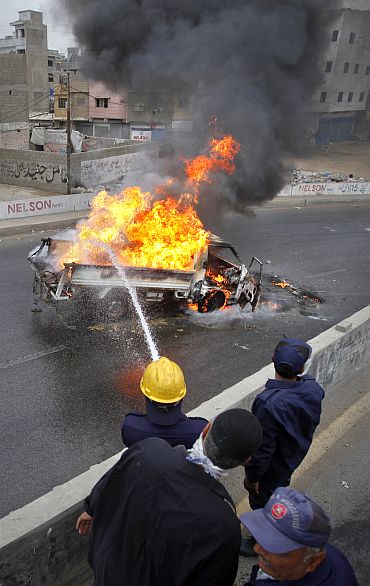
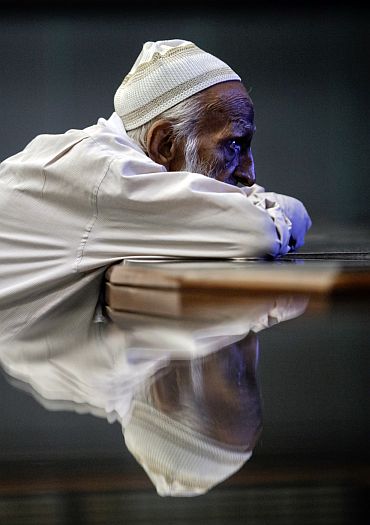
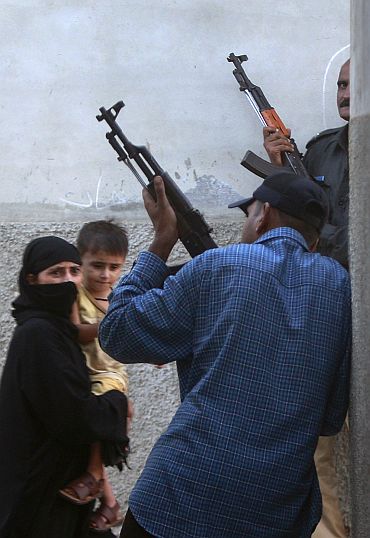

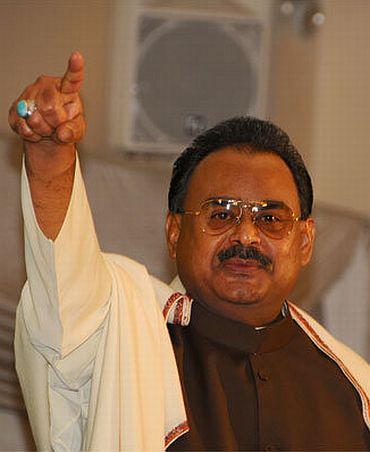

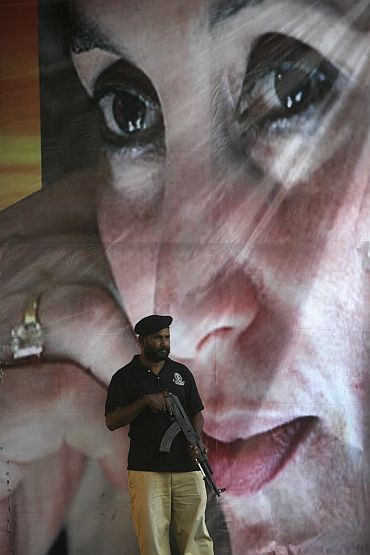
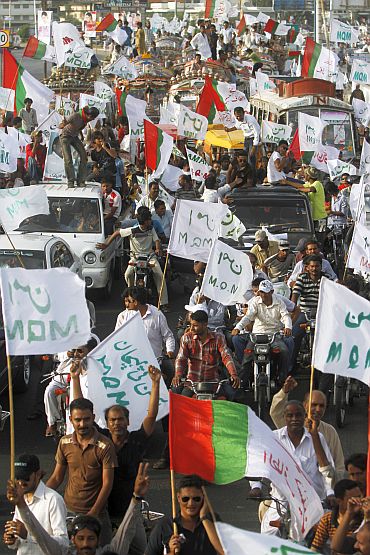


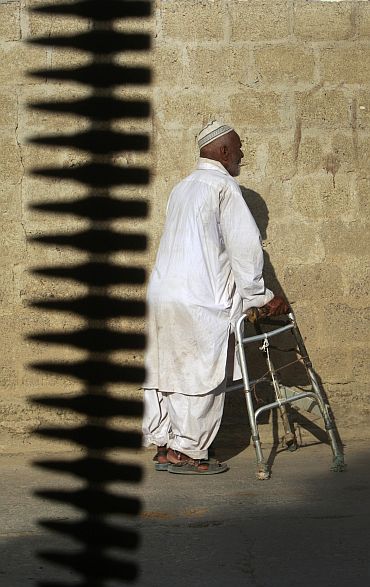
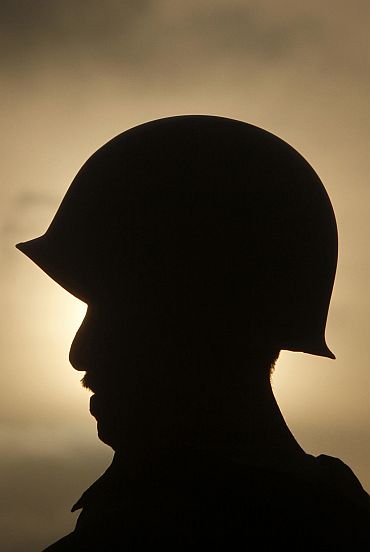
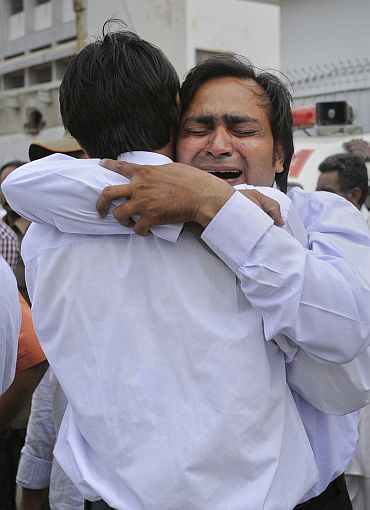
article